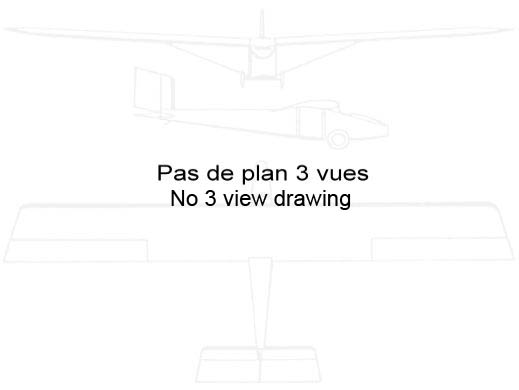| Histoire résumée | The biplane open cockpit Glider first flew in 1959. It has an all-moving tail with trim, and a fixed gear (water skis). Plans were sold for homebuilt construction, One belongs to the EAA Aviation Foundation, Oskosh, WI.
[EEA]
William L. Skliar’s Explorer PG-1 Aqua Glider, or Bayou Bird as it was nicknamed, first appeared in the May 1961 EAA Sport Aviation. The designer described the aircraft as a “boat-towed, two-winged, primary-class, water-ski seaplane glider.” Bayou Bird retired to EAA in 1970, where it was displayed at the museum. It now shares a cozy spot in EAA’s Attic, next to another rare bird—a 1930 Peel Glider Boat. Visit the EAA website and choose one of five different resolutions to best suit your screen.
Air Force Lt. Col. Bill Skliar designed the Aqua Glider in 1959, and with the help of a troop of Air Explorer Scouts, built the first Explorer in the same year. After some tests, Bill compiled a set of plans with all necessary data that were sold through the Corben Development Corporation out of Venice, Florida.
The Aqua Glider was designed to be towed behind a speedboat using a rope between 150 and 400 feet long. The glider was capable of ascending to an altitude of 70% of the length of the towrope. Once the speedboat reached 35 mph, the glider reached maximum altitude. When the pilot of the glider was ready to land, the towrope was cut. This allowed the pilot to glide in at about a 6 to 1 glide ratio. Since the Aqua Glider spent most of its airtime at the end of a towline, it did not need to be registered with the FAA and could be legally flown by non-certified pilots.
The Aqua Glider was so successful, Bill made a few alterations in an attempt to improve his glider. He pulled the water skis off his prototype and installed landing gear made of automobile spring leaves. Since the land gear used the same holes as the water skies, the glider could be converted back and forth to either configuration.
Bill also dreamed of attaching a power unit to make the glider a full-fledged ultralight. However, Bill had trouble finding a compatible engine; after a great deal of research, he decided on the MC-70 McCulloch Go-Cart engine. He tried attaching different combinations of engines in different places and ultimately decided the best configuration was two MC-70s mounted one above the other and buried in the fuselage aft of the wing spar. The propeller was mounted above the engines on a streamlined pylon just thick enough to house the drive chains. After many tests all ending in error, Bill ultimately decided the Aqua Glider was best left as a glider, and so the vision of the Ultralight Aqua Glider airplane never came to be.
The prototype Aqua Glider was donated to EAA in 1970 by Bill Skliar, a true ultralight pioneer.
[wiki]
The Skliar Aqua Glider or Explorer was a small glider aircraft designed and built in the United States in 1959 and subsequently marketed for homebuilding. Designed by USAF Lt Col Bill Skliar and built by him and a troop of Air Explorers, it was a pontoon-equipped biplane intended to be towed behind a speedboat. Using a tow-rope of between 150 and 400 ft (45 and 120 m), the glider could reach a maximum altitude of 70% the length of the rope when the speedboat reached 35 mph (55 km/h). At this point, the rope would be released, and the glider would return to land on the water.
Later modifications replaced the pontoons with landing skids fashioned from automobile leaf springs, and the addition of twin McCulloch MC70 engines driving a common propeller in an unsuccessful attempt to motorise the aircraft. The prototype was later donated to the EAA AirVenture Museum. |




